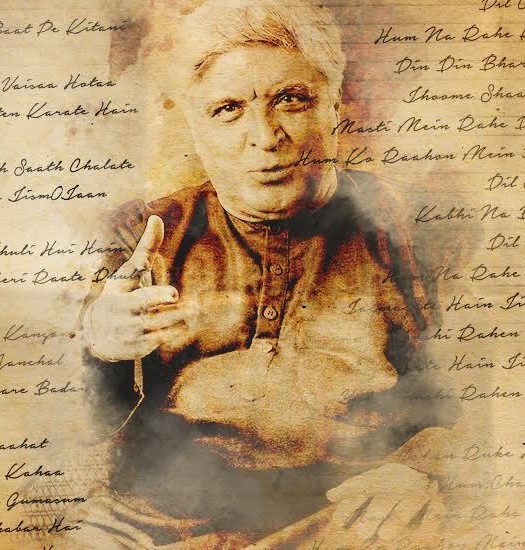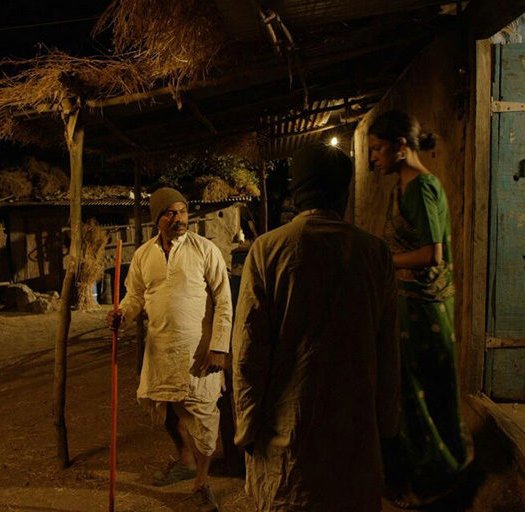Realism & Emotional intimacy makes the film work for audiences ~ Reema Sengupta
‘Counterfeit Kunkoo’ has been selected in the Indie Episodic section at the prestigious Sundance International Film Festival.
Directed by Reema Sengupta. The short film is among 69 others that will be screened at the 2018 edition of the festival. It is also the official selection in theInternational Narrative Shorts competition. We catch up with the director and one half of the production outfit called CATNIP to talk about her film.
Can you explain what is meant by Counterfeit Kunkoo and how it tells the film?
‘Kunkoo’ is the Marathi word for sindoor or kunkum – the vermillion powder that married Hindu women wear. ‘Counterfeit Kunkoo’ refers to signs of marriage that have lost all meaning – that functions merely as simulacra.
Both the title of the film and the poster are meant to assume new meanings once the audience has seen the film.

Counterfeit Kunkoo Poster
What is Counterfeit Kunkoo about?
Counterfeit Kunkoo is a 15 minute narrative drama about Smita trying to find a house to rent in Mumbai, as a woman without a husband. It is an intimate perspective on the idiosyncrasies that come with the misogyny that seems to pervade our everyday lives.
The film talks about housing discrimination, marital rape and the need for liberation – both societal and sexual.
How did you think about the subject and its relevance?
Growing up in Mumbai and having been in the film & advertising industry for years, one hears of countless incidents of housing discrimination. It is ridiculous to me that even today, the need for a roof over your head is exploited to employ social prejudice.
I wrote this script a couple of years ago, when my mother had to face discrimination while looking for a house for us to live in without my father – despite being a strong, independent, financially self-sufficient middle-aged woman. I remember feeling so angry and helpless – this film was the result of that deeply personal wound. However, the film isn’t based on what happened to my mother. The story, characters, setting of the film are completely different.
What is it like to write a story for when you are inspired by real life?
Making a film with a lot of realism in it is actually the accumulation of a lifetime of observations and experiences. It is the little details that make a world truly believable. The world and characters of Counterfeit Kunkoo aren’t directly inspired from anyone. They are the accumulation of my subjective perceptions of various people and incidents.

A still from the short film
Tell us about the casting?
The casting process for the film was very interesting. The primary consideration was realism – people who could bring authenticity to the character. Only two characters were played by professional actors, everyone else in the film are non-actors – neighbours, family-friends and acquaintances who were kind enough to come help out.
As a director, bringing out performances from non-actors requires a completely different approach. For Sunil’s character, I always knew I wanted Vijay Varma. We had discussed the script years ago when I first wrote it and I could never imagine Sunil as anyone else ever since.
Casting for the lead character of Smita of course was the most difficult. When I finally came across Kani, I knew immediately that she would be perfect. But when we met, even before I could pitch the film to her, I discovered that she only spoke Malayalam and English. Our dialogues were in Hindi and Marathi so I didn’t even bring the film up. I went back and found myself looking at her Instagram photos for hours, my Smita had a face I couldn’t extricate her from.
In the next meeting I asked Kani to repeat one of the Hindi dialogues after me – and I knew that we could make it work. Kani is such an incredible actress, she portrayed the character even better than I had imagined it.
How many days did you shoot for the film?
It was shot over four days in real locations in Mumbai.
What was your brief to the DOP, Actors and rest of the crew?
Thankfully, both the DoP Harshvir Oberai and the actors read the script and knew exactly what it needed.
Harshvir and I have worked together on several projects and share great synergy. We spent a lot of time jamming to develop the visual language of the film. The style we decided upon was a bit disconcerting because it did not allow us a lot of safety nets. It would either work really well or completely bomb.
I remember reminding each other to stick to our visual language when the shoot got particularly stressful and our instinct was to revert to a more traditional style of shooting. We did one day of rehearsals and styling with the Kani and Vijay. Apart from that, it was the spaces we were shooting in that gave them the inspiration they needed for their characters. The crew comprised of family and close friends.
Most of them weren’t filmmakers but did such a wonderful job hustling it out in difficult shooting conditions. Their briefs were more tasks oriented rather than objectives oriented. It meant I had to always be extremely specific and exhaustive, but the emotional commitment they brought to the project made it all worth it.
The film has already been selected in competition categories for the two of the best film festivals, what do you think works in the film for a global audience?
I feel all stories, no matter how local and specific on socio-political context, have an inherent universality. The responses we have been getting from international audiences that have seen the film so far (mostly festival programmers, filmmakers, distribution and talent management agents) has been very heartening.
A lot of the emails say that it’s great to see a portrait of an Indian woman, and one that is made in such a subtle way. I was very happy to hear a lot of them say that they were deeply moved by the film and very taken by its storytelling, which they found to be “beautifully nuanced, intimate and bold”.
A filmmaker friend from Spain pointed out that there is a humanity in the film that has been put there with a lot of empathy and observation. I feel it is the realism and emotional intimacy that makes the film work for audiences regardless of geographical backgrounds.

Reema Sengupta
What is your plan with CATNIP. How is it to partner with Kunal?
CATNIP will continue to make highly conceptual short format content, but instead of directing everything I plan on being involved more in the capacity of a creative director, keeping the quality and vibe in sync with the voice I have created for CATNIP.
Kunal is not from a filmmaking background. I had to teach him everything he knows about the craft and the industry. More than partners, it is a sort of a mentor-mentee relationship that we share. The good thing is, because he was trained by a director, he is very much a director’s producer – which I’m told is a rare breed.



